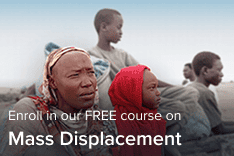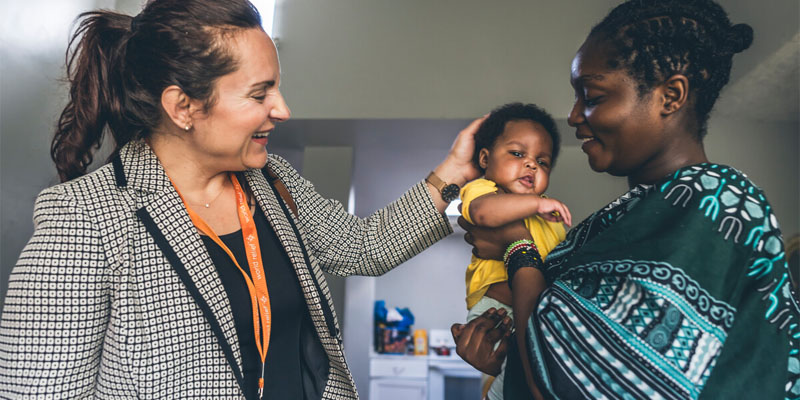Earlier this week, news broke of Parwana Malik, a 9-year-old girl sold for $2,200 to a 55-year old man in an Afghan displacement camp. The heartbreaking story is one of many coming out of Afghanistan this week, as families struggle to survive since the Taliban took control of the nation.
Many of us were shocked and despaired by this news. Here, we answer a few questions about child marriage and what can be done to curtail the devastating practice.
Is what we’re seeing in the news in Afghanistan a common occurrence around the world? How prevalent is child marriage globally?
Unfortunately, child marriage around the world is far more common than any of us would like to believe. Worldwide, an estimated 650 million girls and women alive today were married in childhood. Each year, over 12 million girls are married before the age of 18 – that’s 23 young girls every minute.
Globally, we have made significant progress over the last decade in reducing the occurrence of child marriage, but the effects of COVID-19 have dramatically shifted that trajectory. A recent report by UNICEF revealed that 10 million additional girls are now at risk due to the pandemic – a result of school closures, economic stress, service disruptions, pregnancy and parental deaths.
Isolated and with limited freedom, these child brides are deprived of their fundamental rights to health, education and safety. They are neither physically nor emotionally ready to become wives and mothers and face increased risks of experiencing dangerous complications in pregnancy and childbirth, contracting HIV/AIDS and suffering domestic violence and abuse. With limited access to education and economic opportunities, they and their families are also more likely to live in poverty.
What are the factors that contribute to child marriage around the world?
There are many complex elements that contribute to underage marriage globally – including harmful gender norms, social and cultural practices, poverty and insecurity.
At the root of child marriage is gender inequality and injustice. All over the world today, girls are valued less because of their sex and denied their rights. They are controlled by patriarchal systems that often limit their freedom, education and decision-making.
These systems create social and cultural norms that further restrict girls and women from having control over their own lives and futures. And for too many girls, these norms dictate early marriage before the age of 18.
Nearly 40% of girls in the world’s poorest countries are married before the age of 18. Families in poverty see the marriage of their daughters as a way to both ease the burden of living costs and secure economic stability from the dowry or “bride price.”
Early marriage of girls becomes even more frequent during times of conflict or crisis, as families slip further into poverty. The marriage of a daughter can often be used to repay debts, settle conflict, or create alliances. Some parents, can even see early marriage as a way to protect their daughters from sexual violence during conflict where the rule of law has broken down.
How can we work with communities and families to prevent child marriage?
Thankfully, prevention methods can help significantly in reducing the occurrence child marriage.
One such method is building holistic child protection systems that create protective environments for early adolescents and teens. At World Relief, this looks like early adolescent and adolescent clubs which equip and empower not only children themselves to understand how to prevent early marriage but also those that are in the circle of care and influence, including parents and caregivers, faith leaders, teachers, mentors and other community members. By establishing this kind of protective environment, we can prevent abuse, neglect, exploitation and violence before it occurs.
Since economics and root issues of poverty are the primary drivers for early marriage (as we’ve seen exacerbated in the developing world during the pandemic), another prevention method lies in strengthening families through economic projects that build household resilience and sustainability. At World Relief, these projects include savings and agricultural groups that help families achieve economic security.
Can you tell me more about World Relief’s child protection work, specifically?
At World Relief, our child development and protection work includes early adolescent and adolescent clubs; Channels of Hope for Child Protection; and community-based Child Protection Committees.
We empower churches and communities to create clubs for adolescents to help them develop critical life skills such as respecting one another and discovering personal strengths, as well as sexual reproductive health, child rights and issues of child protection. As adolescents approach adulthood, our programming incorporates lessons in mentoring, job skills training, youth savings groups, life skills and HIV/AIDs prevention and support
Educating children alone about how to protect themselves isn’t enough. That’s why we also train churches in child protection, mobilizing faith leaders and community members to build protective environments for children through our Channels of Hope for Child Protection program. Through these workshops, individuals and the wider faith community are empowered to respond to local issues and build sustainable solutions that help prevent and protect children from abuse and violence and help them thrive in their communities.
We then link children, adolescents and adults together through community-based child protection committees. These child protection committees, established by World Relief, help promote and facilitate partnerships among churches, communities and government systems and providesa way for communities to own the responsibility for child protection as a community and includes the participation of children and youth.
How can I help?
We believe that change is possible for the millions of girls around the world who suffer through forced marriages. But it takes all of us, moving together, to create change that lasts.
When you give to World Relief, you can improve the lives of young girls around the world – protecting them from forced marriages that deprive them of opportunity and leave them vulnerable to physical, emotional, and spiritual trauma.
Here’s just some of what your money can do:
$50 will teach one couple how to better care for and nurture young girls – changing the narrative about the worth of daughters within families.
$250 will form an adolescent girls clubs – providing 15 girls with the opportunity to learn the skills and receive the support they need to transition well into adulthood.
$1,000 will sponsor an intensive conference for church leaders regarding child protection issues so they can be equipped to advocate for and create a protective environment for young girls in their community.
Will you join us as we bring protection, hope and opportunity to these girls?


